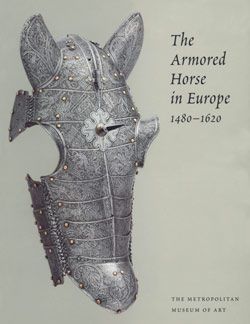Cantle Plate
Not on view
This cantle plate was part of an armor garniture belonging to the Count Palatine (Pfalzgraf) Wolfgang von Zweibrücken-Veldenz (1526–1569), who inherited the principality of Pfalz-Neuburg (also know as the New Palatinate) in 1559 from his cousin Ottheinrich (1502–1559), the Elector and Count Palatine of the Rhine. Along with Ottheinrich's large personal armory, the garniture remained in a castle in the capital of the principality, Neuburg on the Donau, until about 1800, when it and many other important armors were removed by Napoleonic officers. The garniture was eventually split up, its known surviving elements now being divided among four collections: a complete heavy cavalry armor for man and horse (including an armored saddle) and an infantry shield in the State Hermitage Museum, Saint Petersburg; a half armor for infantry or light cavalry in the Musée de l'Armée, Paris (G.135); a second shaffron and crinet in the Musée Royal de l'Armée, Brussels (10.205); and the cantle plate illustrated here.
All the pieces of this garniture share matching decoration featuring a bold pattern of etched bands with a distinctive raised, leafy border and contrasting black surfaces in between. The bands are filled with designs of scrolling vines, cherubs' heads, animals, and musical instruments on a dotted ground, in a style of etched decoration that was popular in Augsburg and Nuremberg from the 1530s to the 1560s.
Inventories of the Neuburg Castle armory identify the garniture as having been made in Augsburg in 1563 for Count Palatine Wolfgang. His ownership is further confirmed by the presence of his coat of arms on the escutcheon plate of the Brussels shaffron. The inventories also mention two additional matching saddle steels, one of which is presumably this cantle plate. For other pieces from the Neuburg Castle armory, made for Ottheinrich or his brother Philipp, see accession nubers 14.25.1654, .1655).
This image cannot be enlarged, viewed at full screen, or downloaded.


